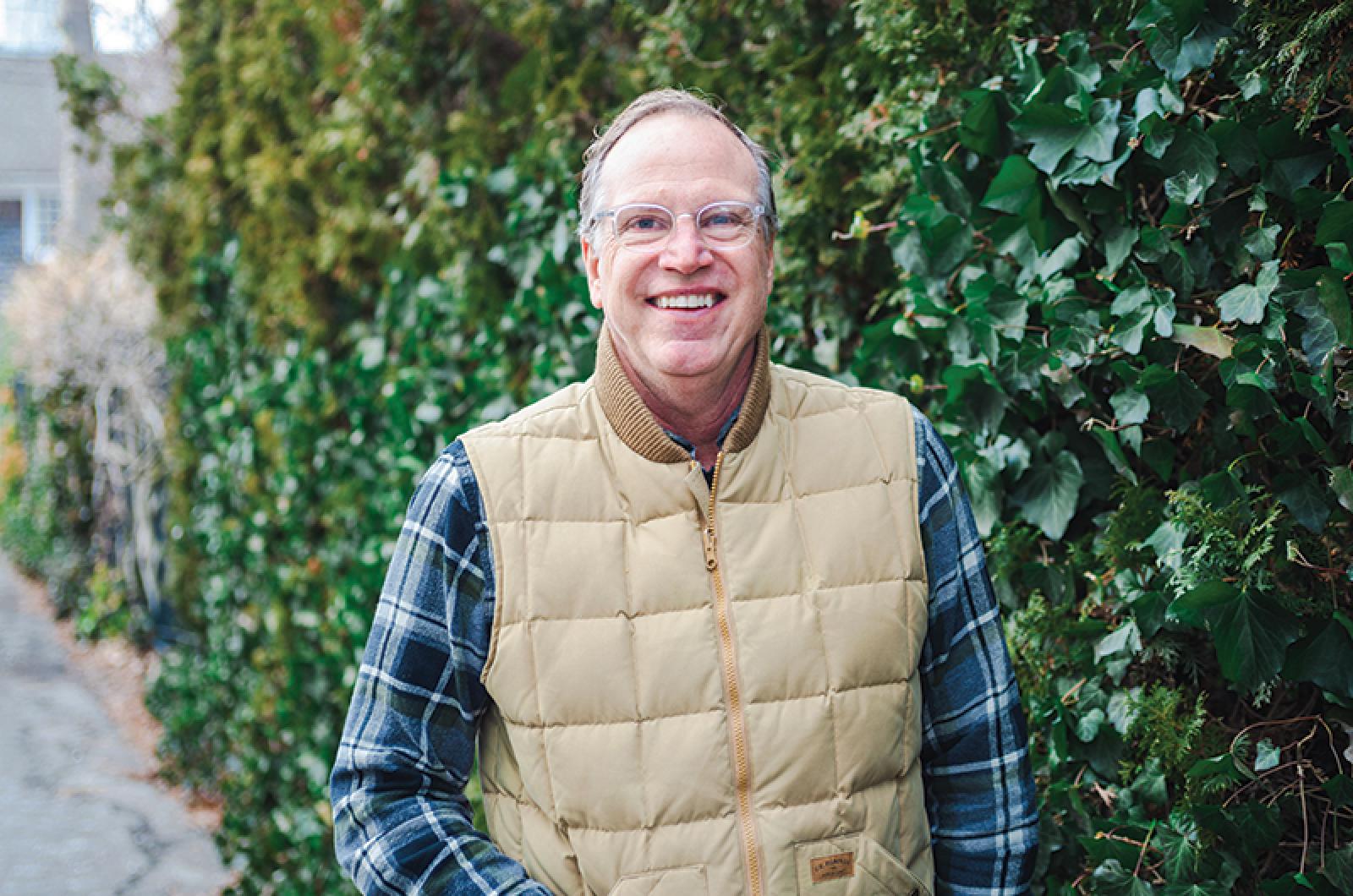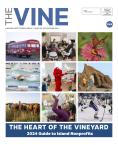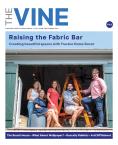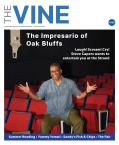Since its founding more than 40 years ago as the Permanent Endowment for Martha’s Vineyard, the Martha’s Vineyard Community Foundation has been supporting Island causes in a variety of ways. In addition to providing more than 100 college scholarships each year, the MVCF has spread its financial resources over a wide swath of Island nonprofits, from those who serve the young – and the young at heart – to those dedicated to food security, environmental causes, the arts, housing concerns and more.
Paul Schulz, who was appointed director of MVCF in November of 2022, relocated to Martha’s Vineyard from Southern California with his family after a brief visit in July of 2020 when they all fell in love with the Island. While Paul intended to be active in Island nonprofits in retirement, he instead wound up setting aside full-time retirement to commit to helping the Island in a bigger way. When Emily Bramhall, the longtime MVCF director, announced her retirement, Paul pursued the opportunity to lead the esteemed foundation, and soon enough found himself in a familiar role in his new home.
Q. After settling on the Island, did you imagine you would find such a fulfilling and impactful job?
A. It was not in my mind. I was going to stay retired and join nonprofit boards and try to make the Island a better place that way. But I am very restless and I’m too young to retire, and, more importantly, Emily Bramhall decided to retire so that was a real eye-opener for me. I immediately pursued the job, and I was lucky enough to get it.
Q. Emily Bramhall established a very high standard for the foundation!
A. Emily is a force of nature. She is incredibly strong, very resourceful, independent, and able to do everything herself from balancing the books to working with donors, grantees and scholarship recipients. We overlapped for two months and I came home every night exhausted, and I wasn’t doing the work. I was just watching her!
Q. How has your role here enhanced your life on the Vineyard?
A. To be right in the center of the nonprofits on this Island is an incredibly special and privileged space. I think this is the best job on the Island. It’s such an incredible way to be involved.
Q. What is the mission of the MVCF?
A. The community foundation’s mission is to make this Island a better place as grant makers and funders of students and non-profits on the Island. It’s a broad mission and a very fulfilling one.
Q. The scholarships are certainly the most high-profile of the fund’s allocations.
A. We’ve been giving out scholarships for 40 years now and we give about $300,000 each year to more than 100 recipients. And last year we went through a $400,000 grant cycle where we awarded grants to almost 40 nonprofits on the Island.
Q. How is the foundation funded?
A. We currently have about a 14 million-dollar endowment that’s been built up over the 40 years, primarily given to us through trusts and estates. So people who love the Vineyard sometimes set aside some of their estate to benefit the Island in perpetuity. With that $14 million we’re able to apply a spending policy each year so that the fund they created remains in perpetuity but gives out money every year for worthy causes.
Q. What guidance do you have for those embarking upon the grant writing process for the first time? How can they distinguish their application?
A. In applying for any grant, the first thing is to do your homework. Make sure you understand the organization that’s making the grants. Make sure you really read the criteria for what they’re looking for. At the MVCF we also like to fund projects, so it’s really meaningful to us if the organization describes a project or program that probably wouldn’t be done if it weren’t for that funding. So we like a specific project, a specific benefit and we love to know about the recipients of the project. The better the narrative is on that – who’s going to benefit and how they’re going to benefit – the more likely the organization is to receive a grant.
Q. Describe the process once the application has been submitted.
A. We ask for a written application to start. In this last round we received 59 applications. Based on staff judgment, we narrowed that list down, then we presented almost 40 of those applications to the board. The full board of 11 people is reading and reviewing and sitting in on the interviews with these nonprofits.
Q. What are you looking for in the interview?
A. It’s only 10 minutes, over Zoom. We’re looking for that special sauce, that enthusiasm and any particulars that weren’t raised in the application, and specific examples of who might benefit. That presentation to the board has a huge impact.
Q. Is it safe to say that not everyone moves forward after the interview?
A. That’s true but you have very good odds if you’re getting an interview.
Q. There has to be so much joy but also disappointment in this stewardship.
A. Without a doubt. On this last cycle we were asked for nearly $900,000 worth of program support and we were able to give $400,000, so there was definitely a lot of pruning that had to happen. It’s also a reminder for our donors that they are so appreciated, and not just for those bequests they make over time, but also for the funds that come in through our highly effective annual fundraising that also supports scholarships and grants.
Q. Once the grant is awarded is there a follow-up?
A. We ask for a very short, simple report once the program is finished. It’s really critical that nonprofits have a way of tracking grant fulfillment in their systems and that they give it to us without prompting. That means a lot to us.
Q. In addition to college-bound students, you also support other education and career paths.
A. We’ve really reached out to those not following a traditional path, those looking to go to community college, to one of the maritime academies, to a trade program, or to get other career certifications. We want to support these students, in particular, in their career objectives. Emily really emphasized that, and we are continuing that approach.
Q. What particular initiatives do you see on the horizon for MVCF?
A. This year there is going to be a lot of focus on food security. We have been a major source of funding for food programs – Island Grown Initiative, Island Food Pantry, Martha’s Vineyard Boys & Girls Club – but some of the government funding is dramatically drying up this year, and there are going to be some really hard decisions. We received more than a million dollars in government funding for food security last year and that’s going away. The other initiative is affordable housing. It’s fair to call it a housing crisis.
Q. What do you think is the most unique aspect of nonprofits on Martha’s Vineyard?
A. The number of nonprofits on Martha’s Vineyard is much higher on a per capita basis than what you would find in the rest of Massachusetts. There are an amazing number of people on this Island who care so deeply about this place that they want to start a nonprofit or fund a passion project to make it better. On this Island people have each other’s back and I see it every day.
For more information on the Martha’s Vineyard Community Foundation, visit marthasvineyardcf.org.
Sissy Biggers is a frequent contributor to Martha’s Vineyard magazine and a regular contributor to The Vine.











Comments